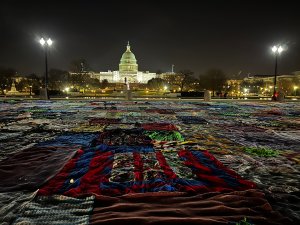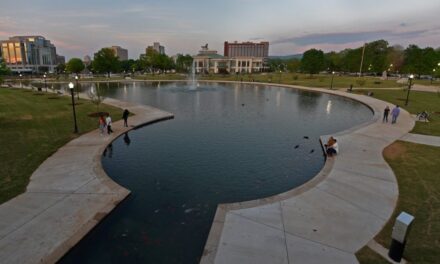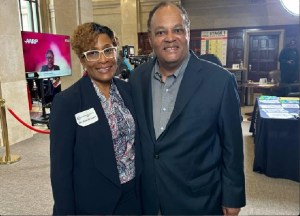By Reginald Williams,
Special to the AFRO
The Homeless Memorial Blanket Project, in conjunction with the Lutheran Church of the Reformation, recently laid approximately 1,200 handmade blankets and quilts on the west lawn of the U.S. Capitol, underscoring the nation’s deepening homeless crisis.
The work of hundreds of volunteers across the nation –bed coverings quilted, knitted, sewn, and crocheted– were placed on the lawn near the Capitol Reflecting Pool and facing the west side of the Capitol, which is undergoing a $890 million restoration.
Each blanket and quilt represented a family needing safe and secure housing. The goal was to collect 500 blankets.
“Today was absolutely magnificent,” expressed Pat LaMarche, longtime homeless advocate and project organizer. “I think the final count was just shy of 1,200 blankets, of which our goal was to collect 500.”
Concerned citizens volunteered thousands of hours to support the initiative. LaMarche said, “every little stitch, every square that could be put together” could be seen.
The work, LaMarche said, “reminds me of the speech that Jesse Jackson gave back in the 80s when he said they were so poor when he was a kid that there wasn’t a single piece of fabric that would have kept him warm in his grandmother’s house, but when she sewed them all together, they were fine.”
Conservative estimates report homelessness to be around half a million persons. Homeless advocates believe that appraisal is severely undercounted. Between 10 and 12 million people are without a safe home is believed to be a more accurate account.
African-Americans experience homelessness at a rate higher than Whites. Black Americans represent 13 percent of America’s population and 39 percent of the homeless population. According to Everyone Home D.C. (a grassroots organization based in Capitol Hill that addresses community concerns), Black comprises 86.4 percent of the homeless occupants while representing just 46.6 percent of the city’s residents. The National Alliance to End Homelessness believes there is no improvement in the situation.
On Dec. 19, the Biden-Harris Administration released its approach to the dilemma in a document titled, “All In: The Federal Strategic Plan to Prevent and End Homelessness.”
“My plan offers a roadmap for not only getting people into housing but also ensuring that they have access to the support, services, and income that allow them to thrive,” said President Biden. “It is a plan that is grounded in the best evidence and aims to improve equity and strengthen collaboration at all levels.”
Despite Biden’s bold plan, Betsy Garrold has little faith that much will be done to address the housing crisis contributing to homelessness.
“There are more empty houses in this country than unhoused people,” explained Garrold, who drove from Knox, Maine, to participate in the blanket project. “Housing is a commodity, and under capitalism, if you don’t get the doe, ray, me—you don’t live in a house. If we really wanted to house people, we could do it. But it’s the lack of political will and its capitalism.”
Several studies show that leaving a person chronically homeless costs taxpayers between $30,000 and $50,000 annually in connected services (incarceration, detox, inpatient beds, etc.). It would cost less to house them.
Hosted by the Charles Bruce Foundation, the Homeless Memorial Blanket Project was held on Dec. 21 because the 21st is the winter solstice, the shortest day in conjunction with the longest night.
Reginald Williams, the author of “A Marginalized Voice: Devalued, Dismissed, Disenfranchised & Demonized” writes on Black men and Holistic Health concerns. Please email bookreggie@reginaldwilliams.org or visit amvonlinestore.com for more information.
Help us Continue to tell OUR Story and join the AFRO family as a member –subscribers are now members! Join here!
The post Homeless Memorial Blanket Project highlights housing insecurity appeared first on AFRO American Newspapers .











